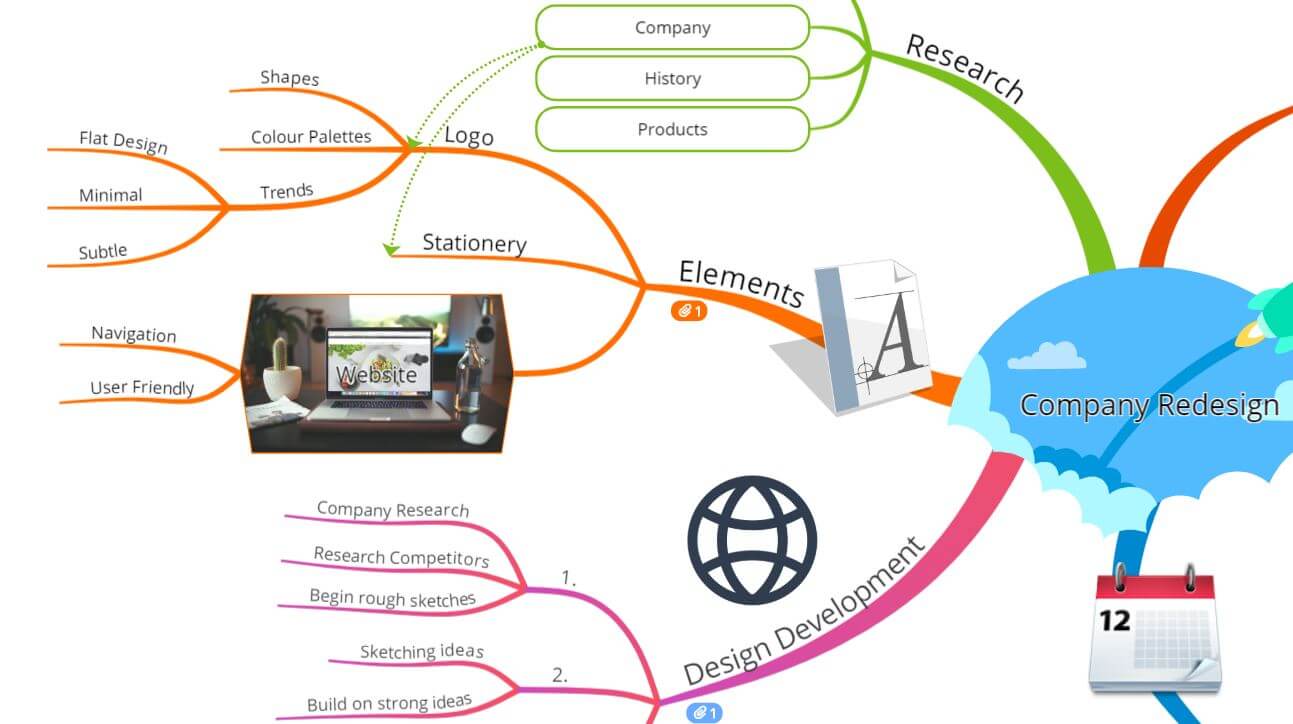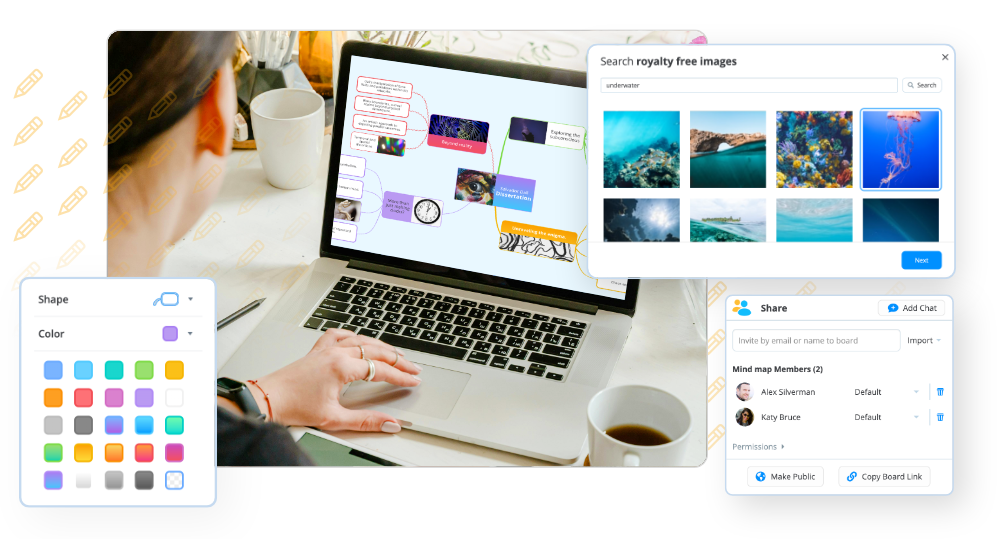Problem solving is an essential skill that can help us succeed, and it is one that we use each and every day – often without realizing it. Whether you’re at school, work or home, problems and obstacles occur all the time, at any moment – so it is important that you can provide quick and imaginative solutions to them.
Being able to solve problems is also one of the major attributes looked for by universities and employers as it displays both logical and creative thinking. It also shows drive and endurance as more complicated problems may require you to try a number of different solutions until you find one that fits.
Fortunately, problem solving is a skill that can be learned, and there are a number of tools and techniques that can aid you in this process. In this article, discover how mind maps can help you with problem solving, whether in the office, at home or in the classroom.
Why use mind maps for problem solving?
Using mind maps can help to bypass the usual panic instinct of the brain when confronted with a problem to solve. When faced with a problem, we automatically panic, experiencing a whole host of unpleasant symptoms – physical and non-physical. When we enter panic mode, we can experience feelings of intense fear, a racing heart, breathlessness and trembling. This isn’t ideal for getting into a problem-solving frame of mind!
Instead of ‘forcing’ your mind to come up with a solution that can result in stress, mind mapping opens up possibilities and allows you to remain calm. When using mind maps for problem solving, you instantly gain more clarity so you can find the answers you need more easily. This enables you to view the problem as a positive challenge and an opportunity to show off your creative skills.
One reason that mind maps are so effective is that they contain all the elements of your problem in one visual ‘take’ – thus enabling you to see them at a glance. Here’s why their format makes them such a useful problem-solving tool:
- Mind maps prioritize the most important aspects of the problem at hand, which focuses your mind. This is due to the fact that the branches of a map should contain single keywords or short phrases, rather than countless lines of text.
- The use of colors and images stimulate your brain, meaning that you are engaged and ready to solve the problem.
- Mind maps start with a central concept or idea, with additional ideas radiating outwards as branches. By using radial thinking in this way, your brain is able to use word association, helping you to generate many creative solutions.
How to solve problems with mind maps
Unsure of how to start using mind maps as a problem-solving tool? We recommend making two separate mind maps; one for the problem itself, and one for the possible solutions.
Begin by mapping out the problem:
- Make the problem the central idea of your first mind map.
- Add all the aspects and causes of the problem as main branches, then investigate these in further detail with sub-branches.
By exploring the problem in this way, you should begin to realize why the problem occurred and what you can do to improve the situation.
Now create your second map for possible solutions:
- Make ‘Solutions’ your central idea.
- Add all of the routes through which you could solve the problem as main branches in the map. Include any colleagues, organizations, techniques or resources that could help and make sub-branches to explore the details of these further.
Create a final branch with the most suitable solution or combination of solutions for this particular problem, then add sub-branches of the details and how you plan to implement this.
By using mind maps for problem solving, you will realize that one obstacle could potentially have many solutions. You should also be able to determine which option is most cost-effective, practical or time-saving.
What are the benefits of mind maps for problem solving?
Mind mapping is such a beneficial tool for problem solving because it can help you structure your thoughts, and gives you complete control over your problem, which will enable you to think more creatively and logically in a stable framework. This ‘big picture’ way of looking at your problem will open up limitless possibilities and engage your brain, stopping the panic instinct!
Other great ways to keep calm when problem solving are:
- Taking a walk – The Romans believed in a principle called ‘solve it as you walk’. This requires you to remove yourself physically from the problem, take in some fresh air, and become creatively inspired.
- Steady breathing – Research proves that controlling your breathing can reduce your heart rate and improve the flow of oxygen around your body.
- Daydreaming – Take your mind off the problem briefly and engage your mind in a focused daydream (i.e. directly thinking about the problem at hand). This will instantly make you feel calmer, more positive and creative.
Using Ayoa mind maps to solve problems
Traditionally, mind maps are drawn by hand. However, by using mind mapping software (such as Ayoa), you can collate all the information you have about the problem in one place, including any resources that could help you form a solution. For example, you can attach files to your map’s central idea or branches so you can refer back to them whenever you need – such as a budget spreadsheet, video or Word document.
With a range of information at your fingertips, you’ll feel ready to tackle your problem, and more in control than ever before. Ayoa also enables you to quickly edit the information in your maps and easily share them with others – making them great for collaborative working.
In this article, you will have discovered how mind mapping can calm you down, focus your mind and generate limitless solutions when you’re faced with a problem. Next time you need a solution, don’t get stressed – get mind mapping! Find out more about mind mapping with Ayoa or try it for free today.


